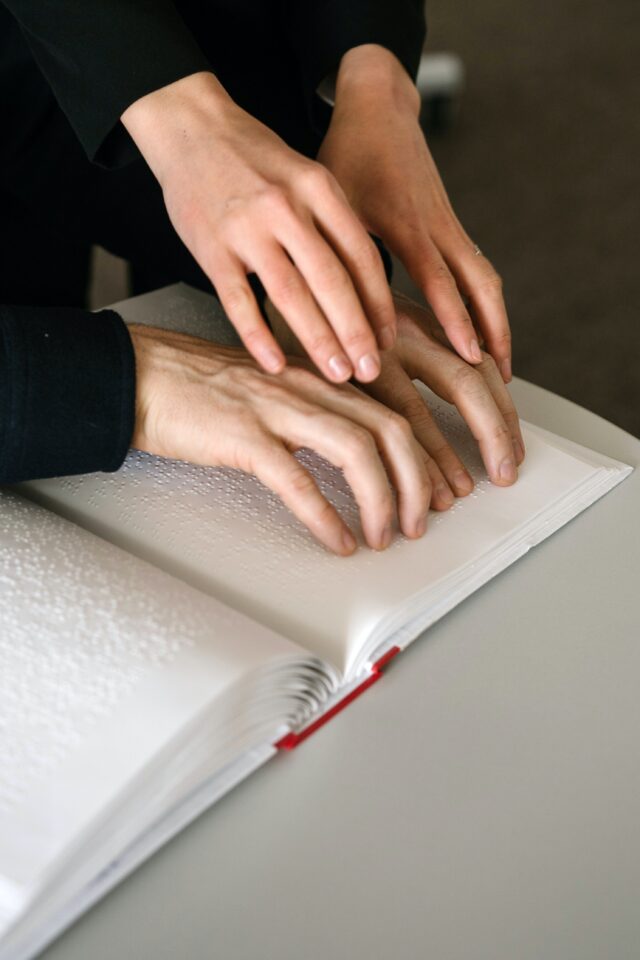What is Braille?
The system of raised dots comprises of six dots which are organised in an area no bigger that the fingertip. There are 63 ways in which these dots can be organised in various shape each correlating to a letter or number
Across the UK there are approximately 20,000 braille users and more than 253 million people worldwide that are blind or partially sighted. There are around 2 million people in the UK who are blind or partially sighted. By 2050, this number is expected to double.
There are many challenges that affected people have and Braille helps them communicate with others and makes things around them more accessible.
How did Braille come about?
When Louis Braille was just three years old, he lost his sight, thus leading to the invention of the Braille system. At the Royal Institution of Blind Youth he was introduced to a coded system of raised dots. Using these letters, soldiers could send and receive messages without making a sound.
Many years after this, Braille developed his own system of raised dots that allowed people that are blind to write and read quickly.
Where is Braille used?
- button on lifts
- books
- toilets doors
- skincare products
- medicine packets
- cash machines
- bottles of wine
- cleaning products like bleach are labelled "irritant" or "do not drink" instead of cleaning product.
Blind and/or partially sighted individuals face many barriers daily in life. According to the report published by Royal National Institute of Blind People (RNIB) in 2020 we have highlighted the 12 moat significant barriers below. From most significant to least significant:
- Low awareness and negative attitudes to sight loss from the general public
- Getting and staying employed
- Navigating streets
- Claiming benefits to maintain a decent income
- Assessing education and support as a child or young person
- Participating in social and leisure activities
- Using transport to get around
- Assessing and using technology
- Assessing information, products and service
- Coming to terms with sigh loss and maintaining confidence
- Practically taking care of oneself and the home
- Getting diagnosis, treatment and on-going care for sight problems
How to observe World Braille Day
1. Raise awareness
Spread the word! Not everyone is aware of the importance of Braille. Use your social media platforms to raise awareness.
2. Give a gift in Braille
Donate or give a partially sighted or blind person a gift in Braille. This gift could be a book, toys, or learning tools.
3. Learn to read Braille
Why not learn how to read Braille? It could be beneficial, as you could use your knowledge to instruct and help someone who really needs it.
References:
- Pezzullo L, Streatfield J, Simkiss P, and Shickle D (2018) The economic impact of sight loss and blindness in the UK adult population. BMC Health Services Research, 18:63; Deloitte Access Economics (2019) The economic impact of sight loss and blindness in the UK adult population. RNIB. https://bmchealthservres.biomedcentral.com/articles/10.1186/s12913-018-2836-0


